Latest News
September 28, 2010
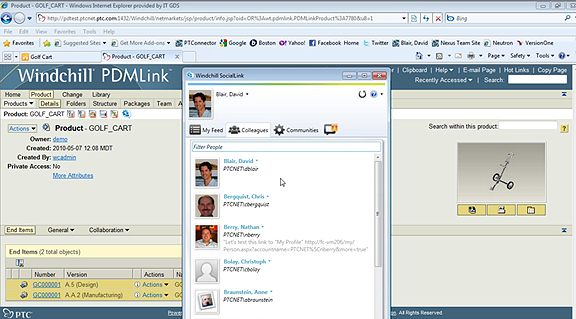
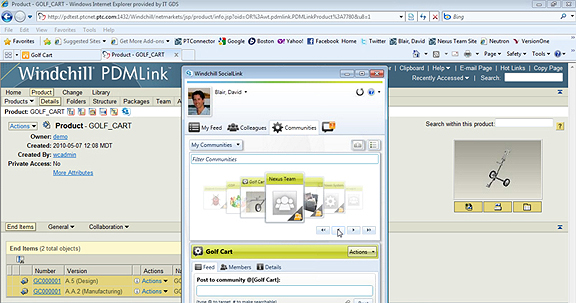
If you’re in the business of developing and designing products, you may soon have to face this question: Are you social or visual? Chances are, you’re a little bit of both.
As digital product development becomes commonplace, so too is a symptom of commoditization: indistinguishable software suites. It seems, no matter where you look, you see variations of the same graphical user interface (GUIs). Whether you’re on the hunt for a product data management (PDM) or product lifecycle management (PLM) system, you’re confronted with the same grids and columns, consolidated into a dashboard with a series of graphs and charts. They may have different color schemes, may even have a few customizable options. But stripped of their GUIs, they offer more or less the same functions: file check-in/check-out, version control, compliance management, change order tracking, and so on.
But in the last couple of years, as Facebook and Twitter exchanges become as ubiquitous as water-cooler gossip, as real-time 3D visualization becomes the norm, these new media and new normals begin to demand equal consideration in supply-chain management and product development. This gives birth to social media-like collaboration tools and model-centric lifecycle management tools.
Social Product DevelopmentPTC‘s Windchill SocialLink, previewed to invited press members last week, is an example of social media-inspired product development. When it finally becomes available, it’ll appear in the form of a floating pallet with collaboration, real-time project updates, microblogging, and community functions. According to PTC, SocialLink will be available throughout many of its products. The preview suggests it’ll be tightly integrated with Windchill PDMLink, the company’s PDM software.
Many of its functions will remind you of social media tools consumers have fully embraced. SocialLink’s collaboration and community tools will remind you of how you comment on your friends’ Facebook updates and how you seek others with similar backgrounds and interests in social networks. Microblogging is modeled after Twitter chats. You’ll be able to subscribe to updates coming from certain individuals and project files, just like you can see updates from friends and select fan pages on Facebook.
These social media-inspired functions, I think, will find an audience among a new generation of designers and engineers already accustomed to working with them. They may also serve as a foundation for supporting portable devices in the future. An iPhone or iPad may not be the ideal device for a serious CAD modeling session. But their ubiquitous presence and lightweight make them the preferred device for remote review, annotation, on-site data collection, and collaboration.
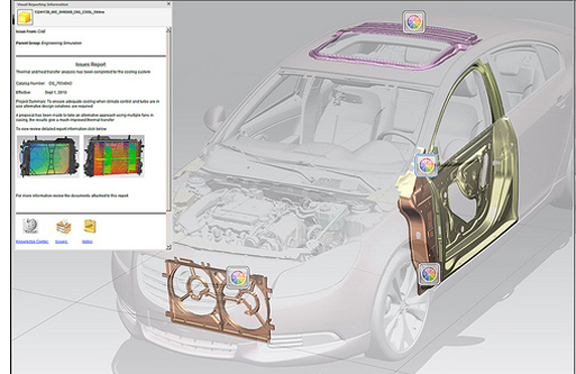
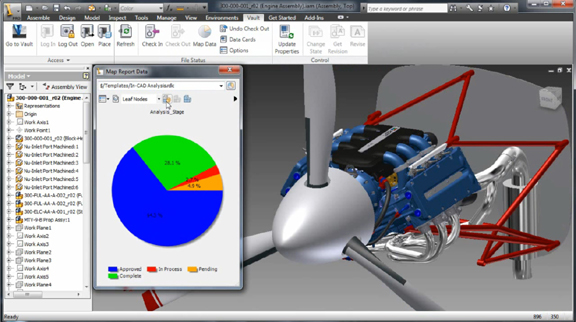
Visual Product Development
If you’re using Siemens PLM Software‘s NX 7 or Autodesk Inventor, you may already be on the road to visual product development. With NX 7 with HD3D from Siemens, you’ll be able to retrieve and display supplier data, file ownership, cost, part status, and many other information housed in Teamcenter right from your assembly model. Similarly, using Autodesk Inventor 2011, you’ll be able to display project and product data housed in Autodesk Vault (2011 Workgroup Edition).
In both cases, the assembly model serves as the interface for requesting, receiving, and displaying your product lifecycle data and enterprise data. Siemens’s HD3D and Autodesk Vault’s data management went beyond simply displaying text and numeric data in a pop-up window or a palette. Seen as colors and shades superimposed on your 3D geometry, your enterprise data and supply chain info may yield insights and wisdom previously overlooked. (It’s a lot easier to miss a line item in a series of columns; not so when it appears as a red highlight on your model.)
A Culture of Transparency
Since the primary motivation of social media is to be open and inviting (some may say it’s too open), collaboration tools like Windchill SocialLinks are expected to foster a sense of community, even among corporate citizens who’ve never met face to face but still have much to gain from swapping talent and skills. This practice, I think, would give rise to products that benefit not only from the primary design team but also from a larger pool of ad hoc collaborators.
Visual data management, as exemplified by Siemens’ HD3D and Autodesk Vault, makes it more difficult to hide or bury unflattering information in a pile of graphs and charts. In rows and columns, it is (at least to me) easy to miss a subcontractor who repeatedly deliver files late or a supplier from a certain region that is now subject to new regulations. Overlaying such data on 3D geometry (where designers spend most of their time) exposes the weakest links, giving project managers and designers the ability to monitor their progress without launching a separate program.
Taking these as harbingers of a new breed of product development technologies, we may expect social media-inspired tools and visual data-management features to appear in more software suites. Perhaps a combination of the two might give rise to socio-visual product development—a transparent, interactive experience.
You can listen to my interview with Tom Shoemaker, PTC’s VP of solutions marketing, where he discusses the use of social media at PCT and how Windchill SocialLinks works with PTC’s CAD and PLM packages.
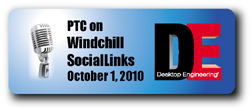
You can also listen to my conversation with Paul Brown, Siemens’ senior marketing director of NX, on HD3D (previously published on June 29, following Siemens PLM Connection conference.
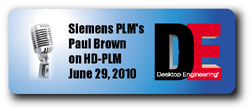
Subscribe to our FREE magazine, FREE email newsletters or both!
Latest News
About the Author
Kenneth Wong is Digital Engineering’s resident blogger and senior editor. Email him at [email protected] or share your thoughts on this article at digitaleng.news/facebook.
Follow DE





